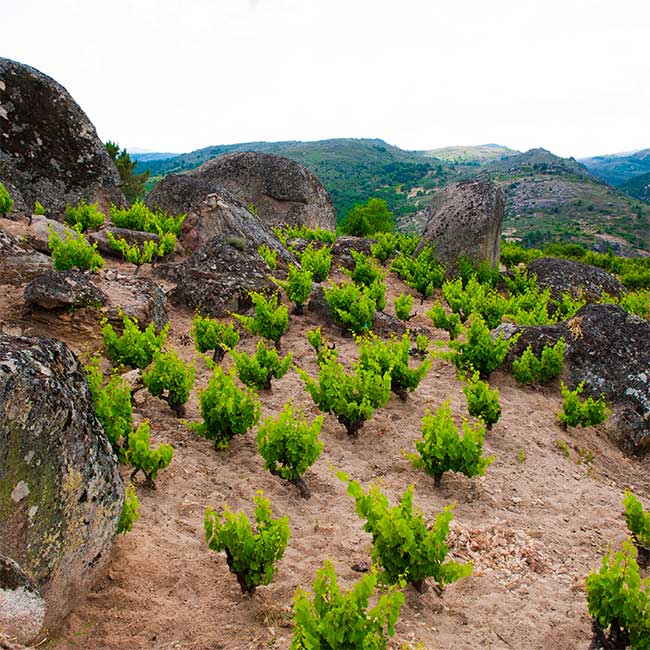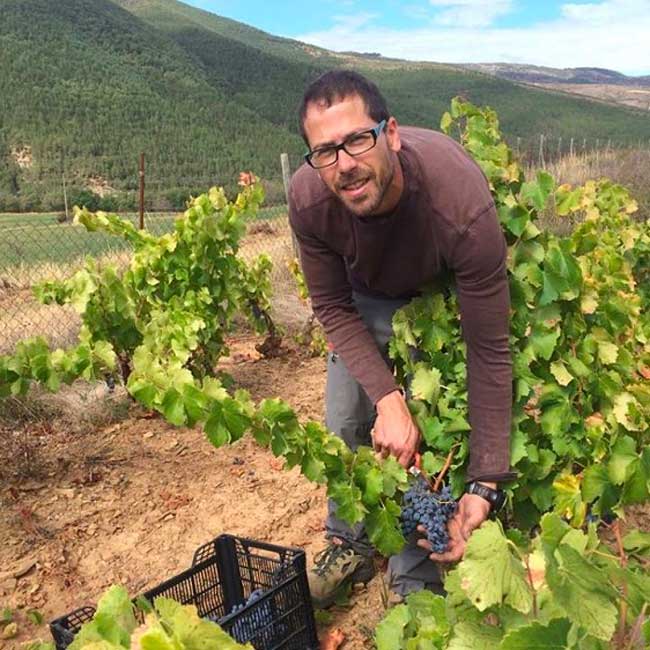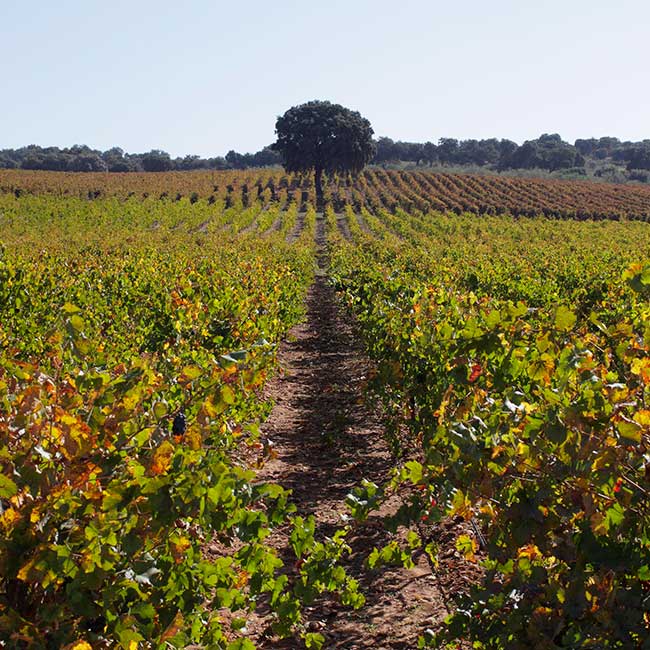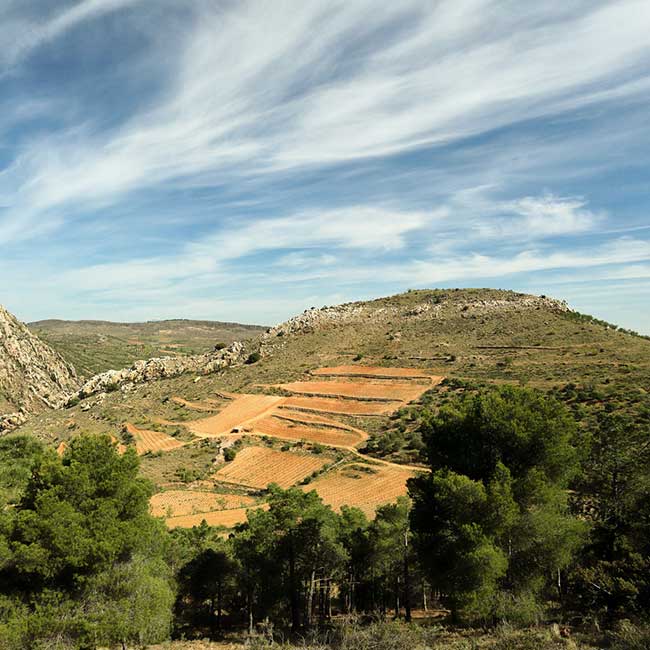.png.transform/rendition-xs/image_image%20(1).png)
Spain, Home To Europe’s Highest Altitude Vineyards
As temperatures rise, altitude has become a hot topic in the wine world as growers seek cooler places to plant. In Spain, vines have long grown on steep slopes where temperatures are lower and little else could be cultivated. We explore the importance of altitude before taking a tour of some of Spain’s highest vineyards.

Although fashionable, it is worth remembering that altitude is only one of many factors that converge to create a great wine, and one that must be considered in conjunction with latitude. But in a country like Spain, where there is no shortage of sunshine, even a small rise in height can make a big difference as temperature drops by around 1ºC with every 100m (1.8ºf for every 328ft.). Cooler temperatures slow down ripening and help retain the acidity that gives wines their refreshing taste and the structure to age. Studies, such as the one presented by Ramón Bilbao to launch their Viñedos de Altura and Lalomba wines from vines as high as 720m (2360ft), also highlight the importance of increased light intensity at greater height, making grape skins thicker with greater anthocyanin levels and therefore more color and aromas in wines. Soil quality is also poorer, and fewer nutrients and better drainage result in smaller berries and greater concentration.
There are high altitude vineyards all across Spain, but the country’s - in fact, Europe’s- highest vineyards are in the Canary Islands, so that is where we will head to first.
Tenerife, a garden of varieties
It may be part of Spain, but Tenerife lies off Africa, on the same latitude as Egypt. Without the cooling affects of sea breezes and altitude, it would be too hot and humid to grow grapes here. This is why it is home to Spain’s highest vineyards, up to 1,700m (5,780ft) on the slopes of the Mount Teide volcano.
Roberto Santana, of Envinate, explains the importance of altitude, “The vineyard that supplies grapes for our Benje red and white wines is located in the town of Santiago del Teide at 1,000 -1,100 m (3280- 3600ft) above sea level. Altitude is a very important factor on Tenerife as the Alisos winds cause clouds to build up on the northern side of the island, which has an Atlantic climate with high humidity and rainfall. These clouds tend to accumulate around 600-800 meters (1970-2600ft), so Santiago del Teide is above the clouds leading to lower rainfall and humidity than other areas. There is also a greater temperature difference between day and night, so the climate is much more continental. The altitude also leads to higher light levels, so compared to the wines that we make in other areas of Tenerife, Benje is more fruit-forward, and the white has a greater level of glycerol.”
Pinot Noir, on the slopes of the Pyrenees and of Sierra Nevada

Pinot Noir is another grape that needs cool temperatures, too hot and its red fruit turns jammy and loses structure. It is not a grape that you find in many places in Spain, but where you do it is always at very high altitude. Bodegas Bal Minuta grows Pinot Noir vines at 1,200m (3,900ft) on the slopes of the Pyrenees, producing El Vino de las Nieves (the wine from the snows). It may come as more of a surprise to learn of Pinot Noir projects in the far south.
Cortijo de las Aguilares grows organic Pinot Noir at 900m (2,950ft) in the mountains behind Málaga; more Sonoma-coast than Burgundian in style, the wine displays bold strawberry fruit. In Granada’s Alpujarras Mountains, Manuel Valenzuela of Barranco Oscuro makes natural wines from grapes that include Pinot Noir grown as high as 1,386m (4,500ft), surely the highest on mainland Spain.

Garnacha from Gredos and Aragón
Garnacha has come into its own with the rediscovery of hard-to-labor plots of old vines in mountainous areas. A thin-skinned grape, it gets its structure from acidity rather than tannins and can tend to high alcohol, so it really benefits from cooler temperatures and poor soils to produce more fragrant, elegant wines. Comando G put Gredos on the map with their Burgundian style wines – from plots as high as 1,230m (4,000ft) - joined by producers such as Daniel Ramos and Arrayán at similar altitudes.
In Aragón, Fernando Mora MW explains why Bodegas Frontonio has moved to higher altitude plots in the Valdejalón area: “We started out with dry-farmed bush vines at 400 meters (1,300ft) above sea level. In some years, the plants really suffered in August and shut down, so sugar ripeness became out of line with phenolic ripeness, leading us to harvest with higher alcohol levels. We started to buy mountain plots of old vines at 700m (2,300ft) and we really saw the benefit. Now we only plant above this altitude and we have some vineyards at 1,000m (3,280ft) in the aim of obtaining better balanced, more fluid wines, with lower alcohol levels.”

Over the border in DO Calatayud, fellow Master of Wine Norrel Robertson sources El Cismático from 900m (2,950ft), a very aromatic, concentrated and intense old vine Garnacha with red fruit, mineral and lavender notes. In the same area, 80% of Virgen de la Sierra’s vines are located between 700 and 850 meters high (2300-2800 ft) allowing winemaker Manuel Castro to produce many styles from the chameleonic Garnacha grape, “from subtle, fresh to concentrated, mature wines.“
Whatever your preference, Spanish vines seem destined to reach ever greater heights.
Text: Anna Harris-Noble

